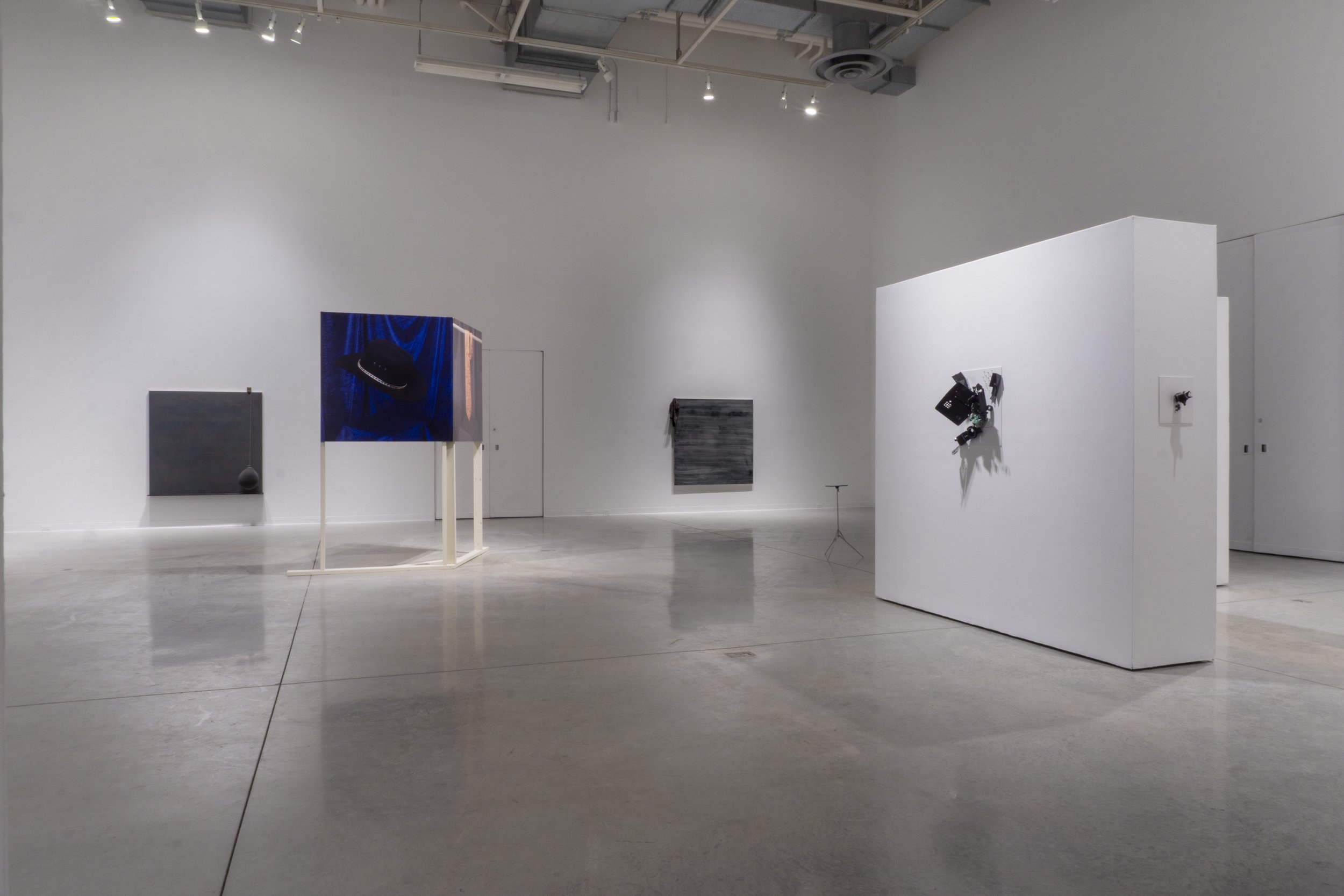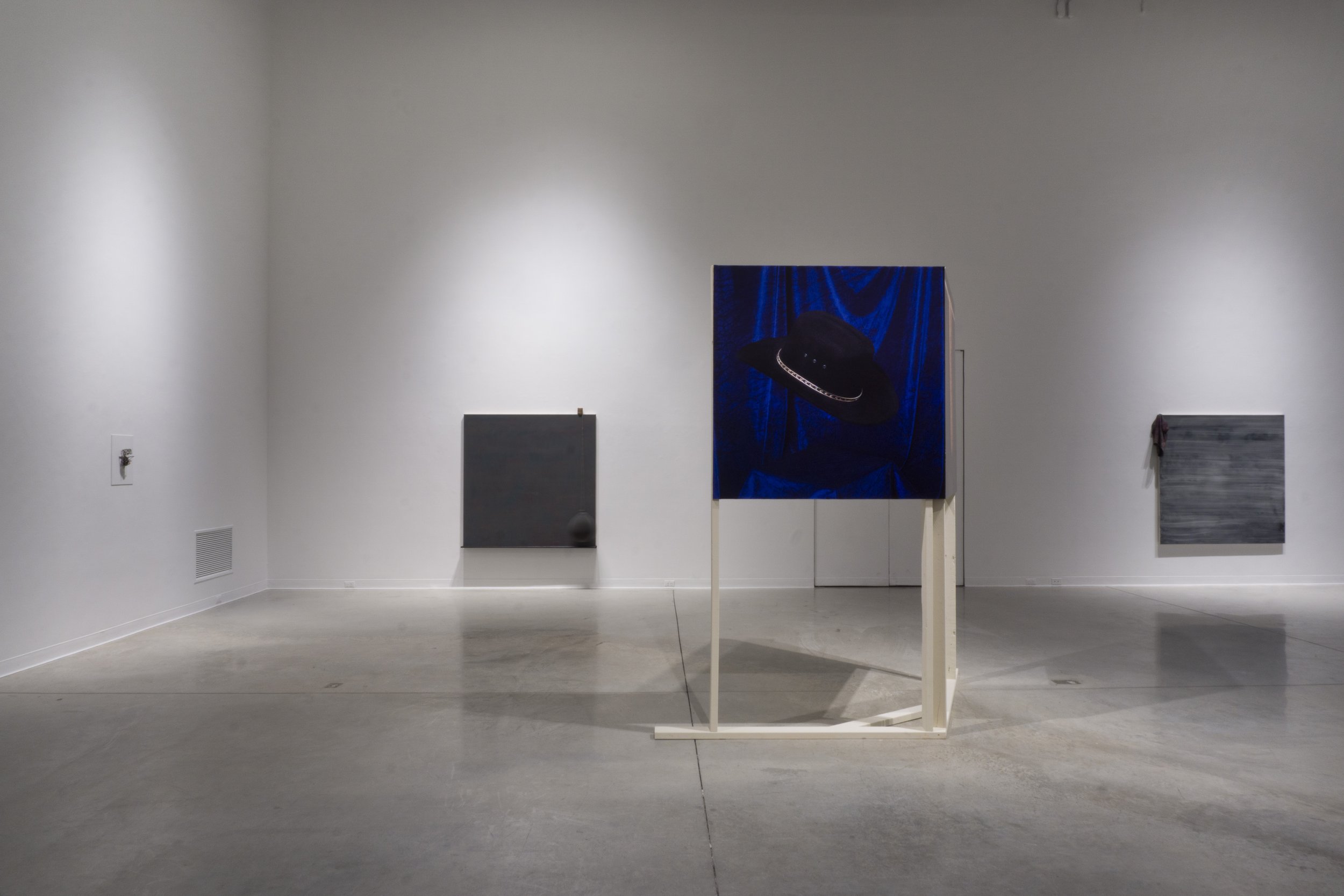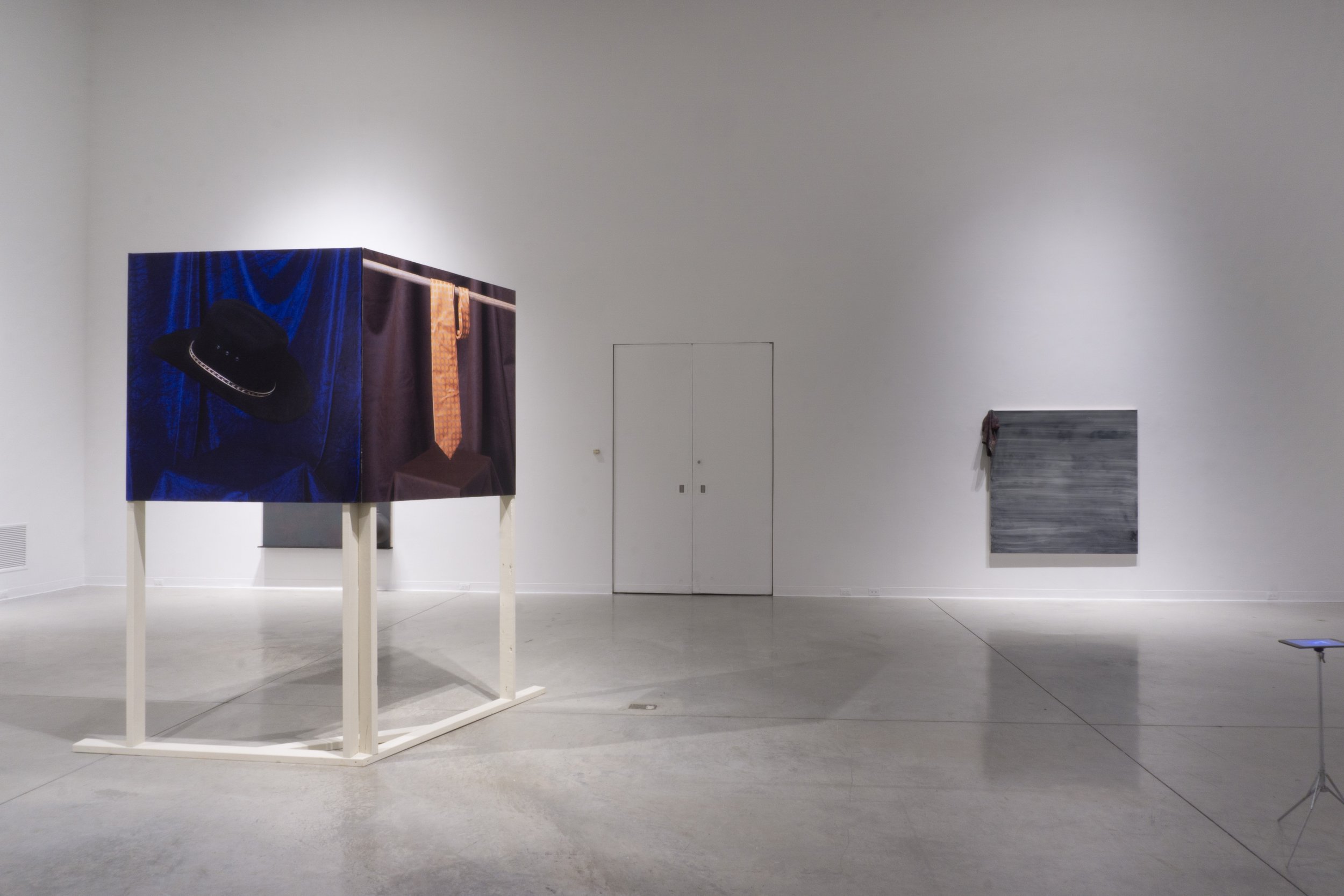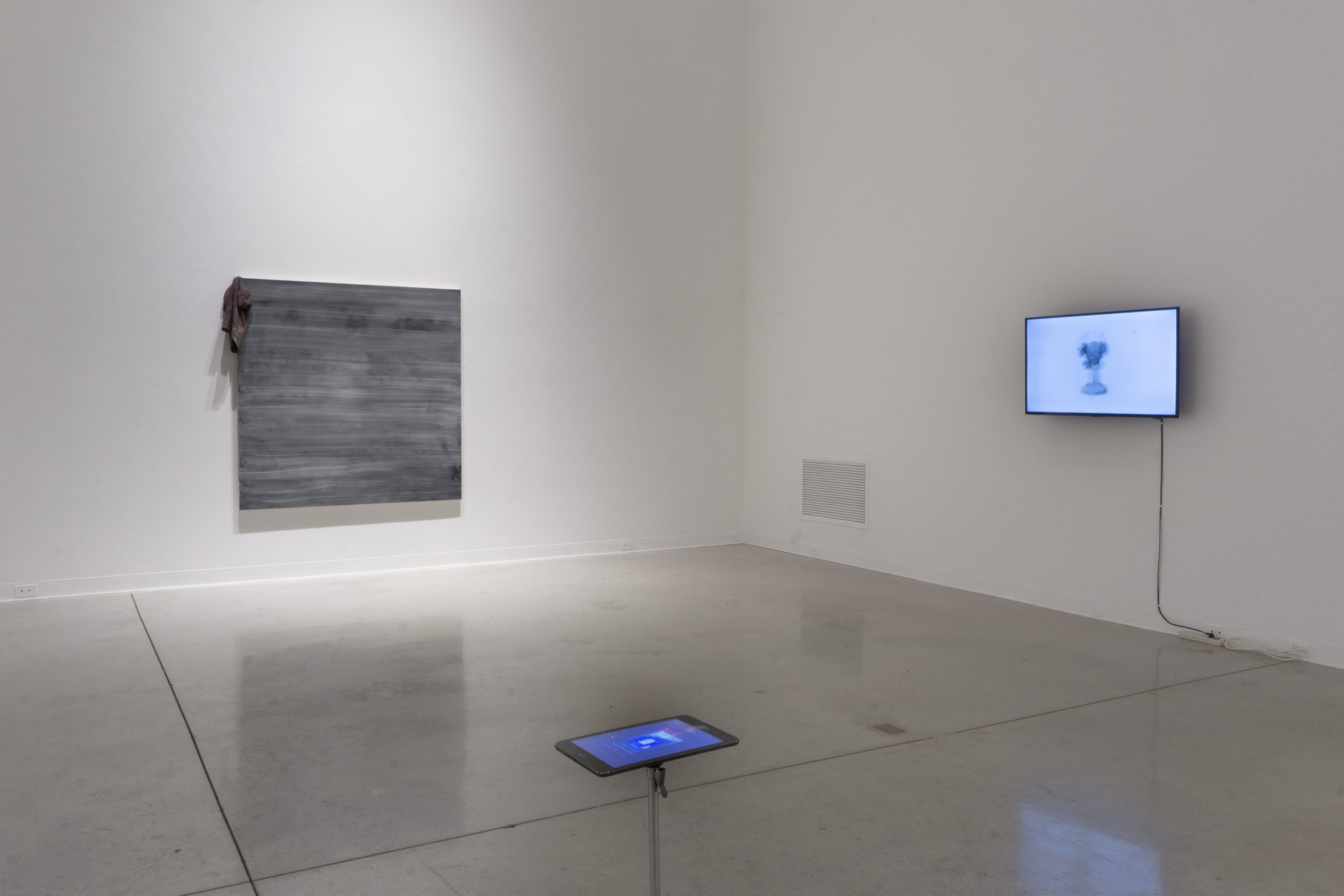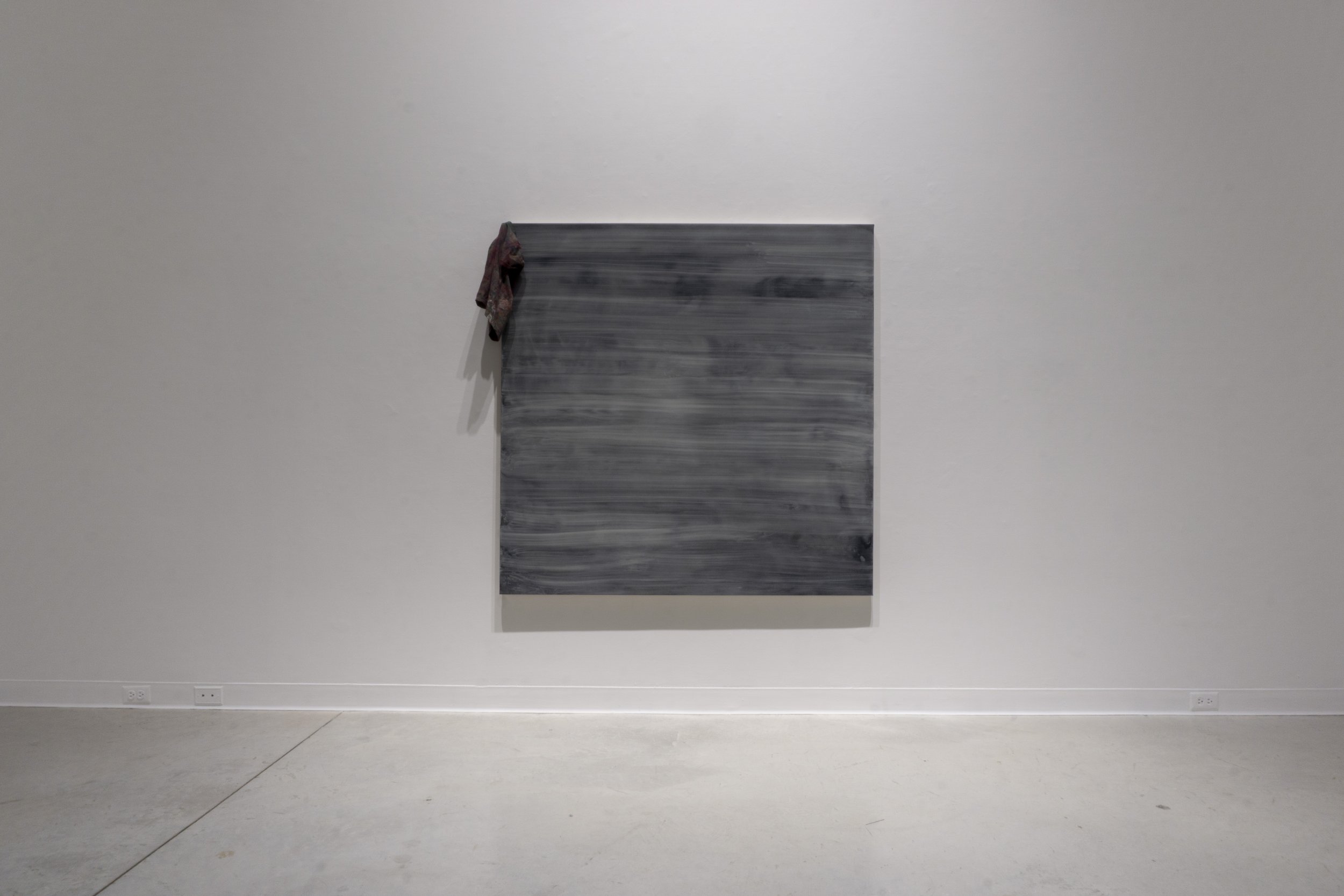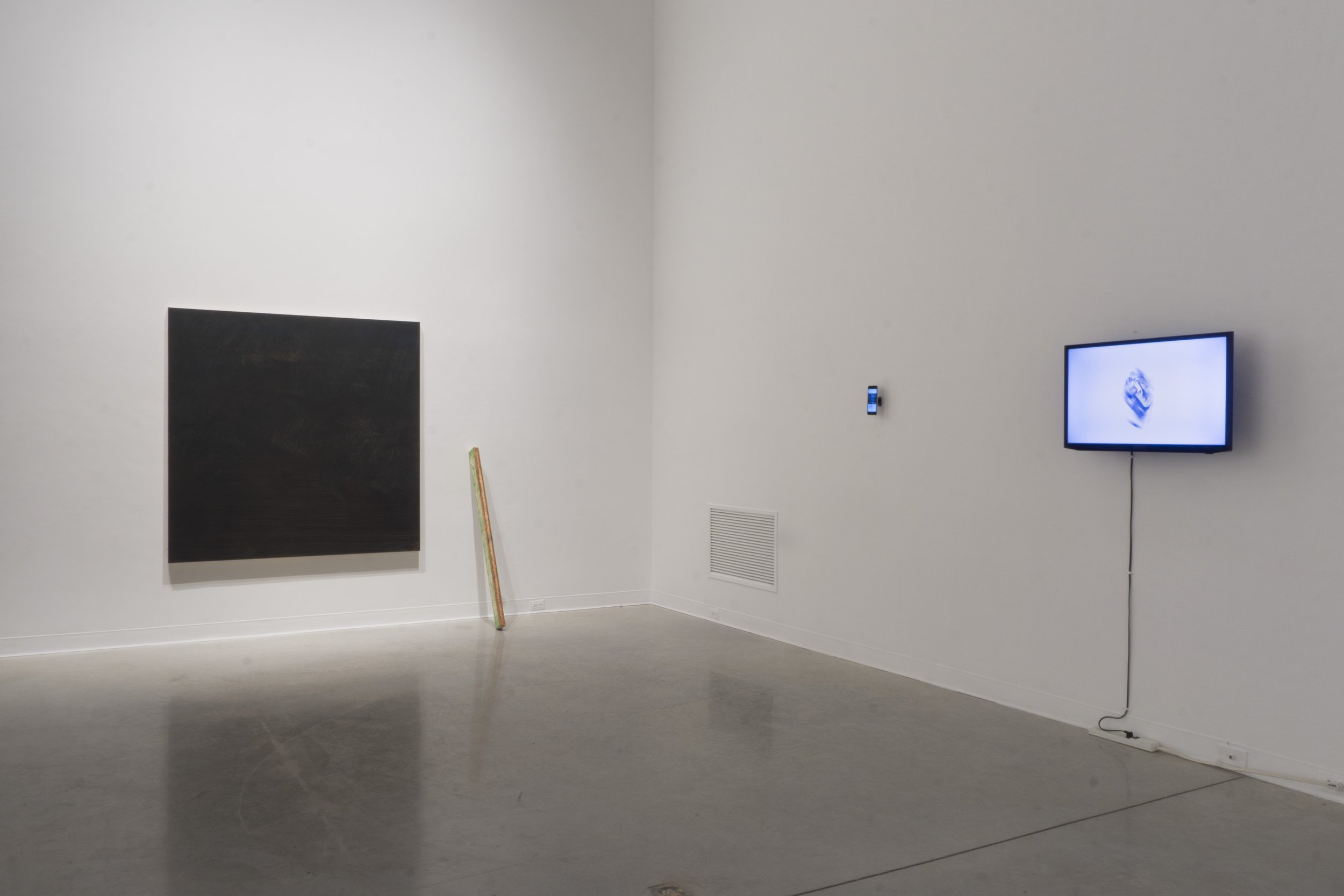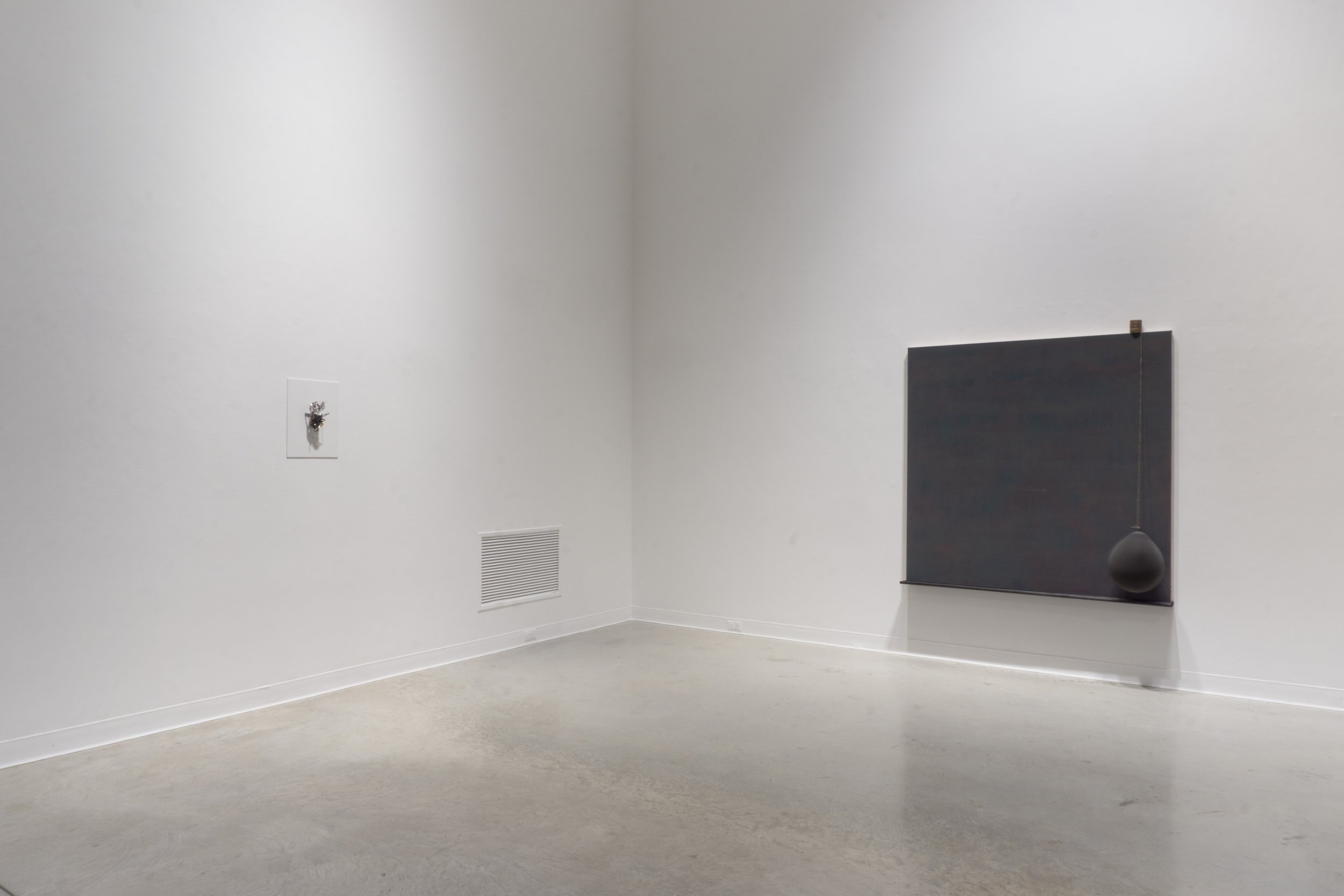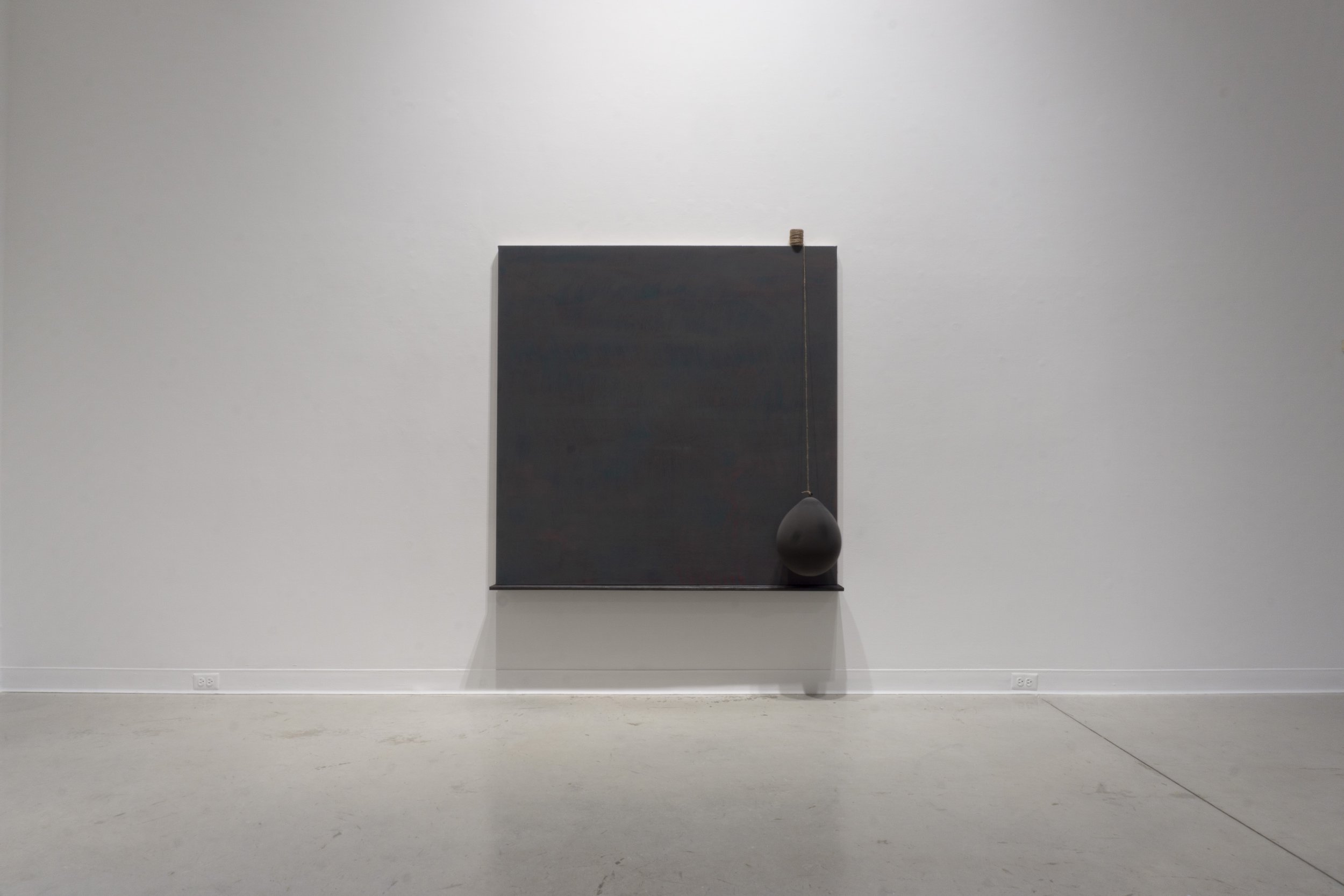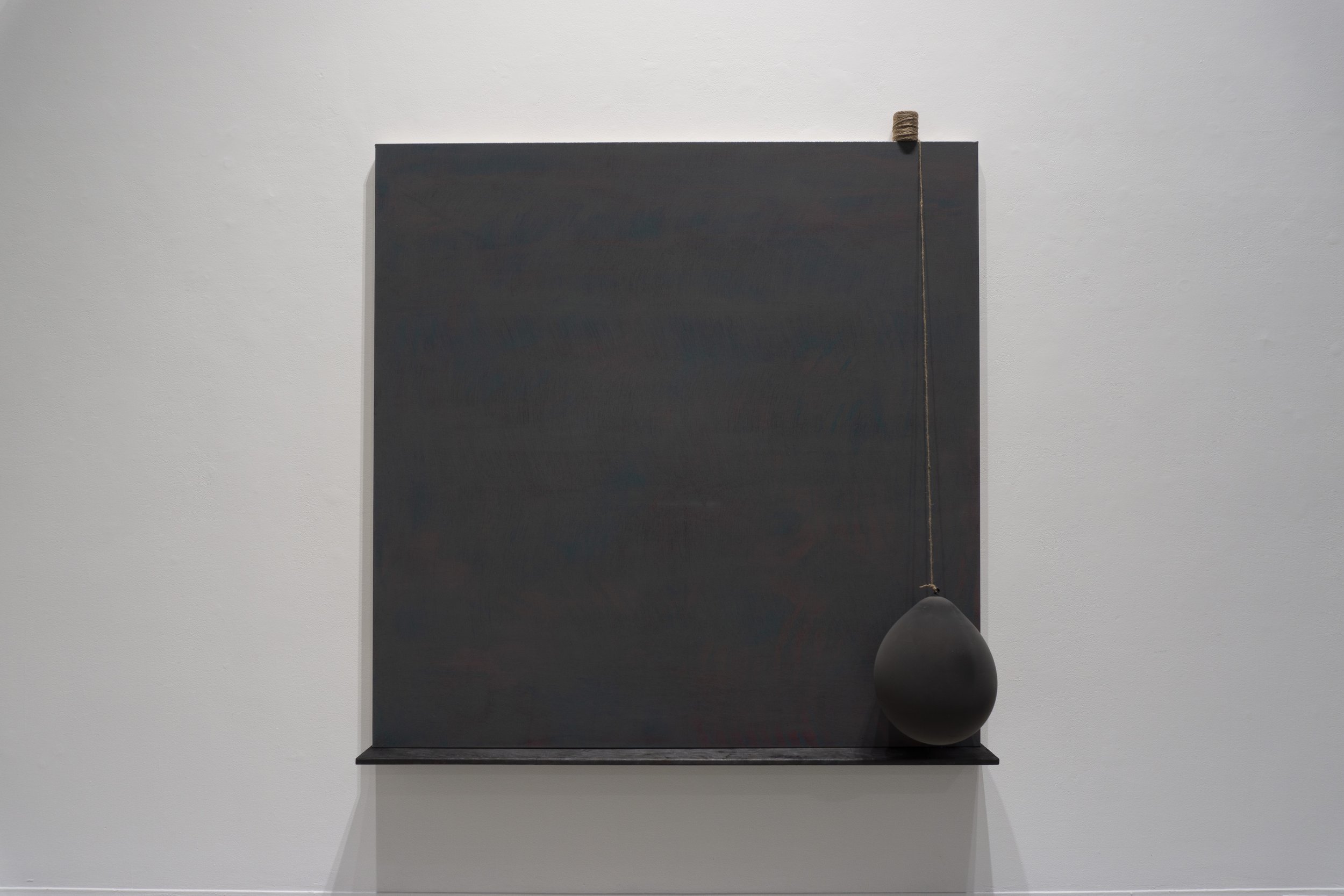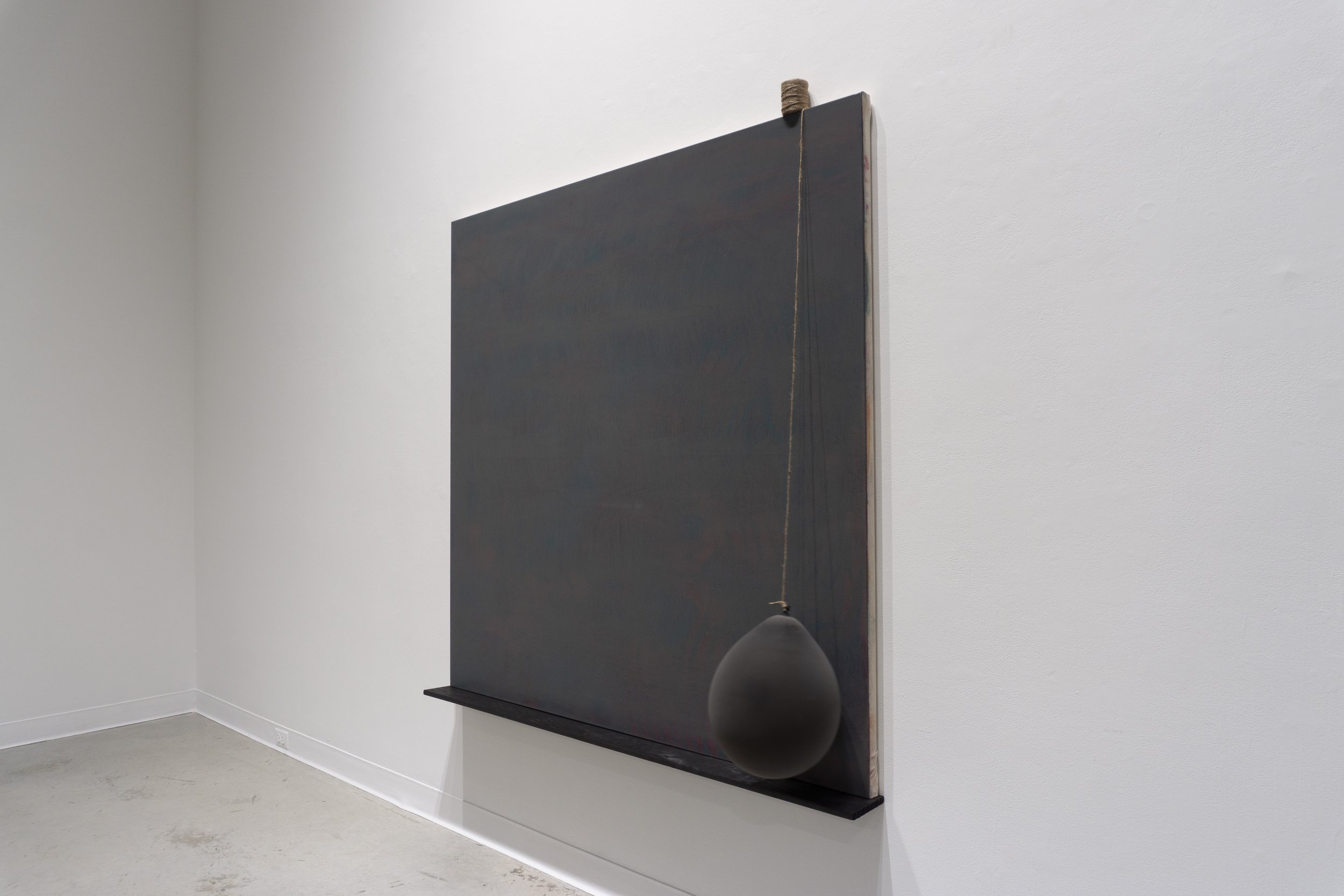Sometimes in the night, a fox slips by, ArtLab Gallery, Western University, London CA
Exhibition review
Sometimes in the night, a fox slips by is an assemble of works which are investigating the unctuous illusiveness of the material. A mysterious flux of feeling, of memory, of what is at stake and what is lost, characterizes the works of artists Anahí González, Dong-Kyoon Nam, Phillip Gurrey and Sasha Opeiko.
González large-scale photographic installation is a dominating force within the gallery-space. When one enters, you are immediately struck by the graceful quality of the construction, it feels alive in the space, but also somehow out of place. In retrospect, I think that Bueno, Bonito y Barato is not really out of place, as much as it exists in such a way that it feels as though this construction could live in many places. There is a quality of transience here, grounded by the work’s reference to the billboard and the site-specific. But this work is not a classical billboard, no, the construction doubles up and tilts to the side, the first step in a crystallization of many images to come. This slanted diptych features two photographic images. Both are cinematic object studies, a glamour shot of a deeply person object. The image mounted on the left side of the two panel billboard is a kind of glamour shot of a floating norteño, a brimmed hat “commonly used in the north of Mexico and southern USA, also known as a Texano or Occidental,” (González). The norteño floats behind an indigo crushed velvet background. The image to the right mirrors the vitality and presence of the norteño; depicting a marigold coloured, circle-pattered tie, set in the foreground of the image and hanging by a wooden dowel. The background of the photograph is layered in rich brown leather, coating every surface. These two lush images refer to Mexican Casta and Costumbrista paintings of the 19th century. Explorations of the social customs and dress in Mexico in the 19th century, these images were often defined by a convergence between the aesthetic and the political.1 So too is González’s Bueno, Bonito y Barato an expression of the vitality of these everyday articles of dress, which, when they are displayed, become deeply entrenched in the politics of labour and global trade.
Phillip Gurrey’s paintings embody an expansive space in the gallery, they have a presence about them which appears to extend beyond the canvas. These minimalist abstract works appear as meditations on process and making, while also being connected to the fleeting impermanence of youth and loss of innocence. The works seem to be created by a slow and methodical thin layering of diluted paint on canvas, slowly built up in order to create a sense of traces hidden beneath the surface. This method also reminds one of the natural environment, of movement or wind, a force which is more powerful than the individual. There is a complexity of layering through process which is integral to Gurrey’s paintings, which is balanced by a kind of loaded flatness. Similar to González’s Bueno, Bonito y Barato, Gurrey’s works illustrate in encounter with a loaded memory-object. With each painting, thoughtful placed above draped overtop or staged beside the canvas we see the object which was the method of production, whether that be a disturbed ballon on a string, a paint-stained child’s t-shirt or a 2X4 carefully wrapped in canvas. Gurrey’s method here becomes intrinsically linked to the conceptual implications of the works. For these materials do not only encompass a pragmatic usefulness, they are personified, they have been gifted with complex personalities through their use. The children’s t-shirt and grief-stricken ballon appear as though lifted from a fragment of a lost memory.
Dong-Kyoon Nam’s series of assemblages are kinds of cyborgian animations of various discarded technologies, PS4 controllers, cameras, projectors and computers, objects originally
1 Mey-Yen Moriuchi, Mexican Costumbrismo: Race, Society and Identity in Nineteenth-Century Art.
intended for acts of escapism, entertainment, creative endeavour and pleasure. Nam’s meticulous process of re-constructing these objects appears as objects alive, bursting from their frames. And yet, they are set on the frame, they embody an expressionist painterly quality in their presentation. Nam’s Untitled- 13, 2021 sits on the floor of the gallery, mounted on a square of raw wood. A small ticking sound draws you closer, towards this delicate sculpture of the deteriorated, stained and cracked open remains of a slide projector, carefully arranged beside a torn up and dirt-laden instruction manual and thicket. Here, the organic and the apparatus are made one through this illustration of the mortality of the projector, its eventual slow degradation. And yet, in a poetic turn, the work emits the small sound of the slides clicking through, this familiar sound, the ghosting of the apparatus’s former usefulness.
Sasha Opeiko’s digital multi-media works are also invested in the ghostly traces of memory and objects, but also, the ways in which data networks and artificial intelligence result in a digital deterioration through loss of information and processes of conversion. In Forged Afterimage Compression visualizes a pulsating virtual landscape, flattening and expanding as it floats in space. The obscured digital landscape is without any distinct signifiers which may allow us to gauge where this environment is meant to exist geographically. It is a digital construction of ‘landscape’, totally removed from the physical environment and nature. Opeiko’s process begins 3D scans captured using the app Trnio. These scans are incomplete and inconsistent. Opeiko states: “The outcome is a kind of forged afterimage, compressed into a digital skin or something like a distorted geological compound, resulting from the app’s inability to fully comprehend a 3D representation on a flat screen. These are remnants forged from remnants.” Opeiko’s approach cannibalizes the information image through distortion through repetition, a mirroring of the affects of the internet and digital networks on information and images online.
González, Gurrey, Nam and Opeiko have all drawn from John Burnside’s poem Hypothesis in their curatorial approach. Burnside’s fox is the creator of trace fragments of destruction and carnage, as he slips by in the night and leaves the evidence of his kill, slowly becoming dust. Investigators of material degradation, but also reinvigorators of the cast aside, each artist deeply considers the role of the material and its disintegrating particles. These remnants might be loaded objects, connected to cultural constructions of aesthetic desire and global politics, or they might be memory-objects imbued with both utility and nostalgia. These objects may be lost souls, so deeply degraded in pixelated that their original form is forever abstracted. In the case of each, the presence of the material is built around its own individualism, deeply affected by the destructive force of capitalism, technology, global trade, and mortality,
